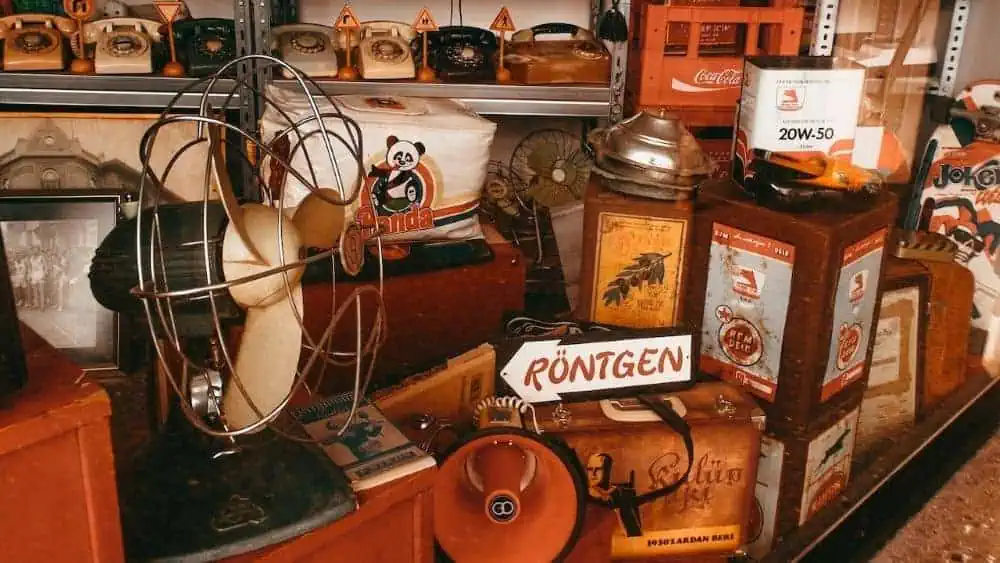Article Summary (TL;DR)
✅ Selling used items on Amazon can be lucrative due to its large customer base and strict quality standards.
✅ When choosing between Individual and Professional seller accounts, consider factors such as sales volume and budget.
✅ While both Amazon and eBay offer vast user bases, global reach, and multiple selling models, they differ in product categories, fulfillment options, pricing models, and seller reputation, so sellers should choose the platform that aligns best with their business goals and inventory.
Selling used items on Amazon is a lucrative opportunity when executed correctly. Ask any successful Amazon sellers out there today.
Amazon’s online store has a vast customer base, robust infrastructure, and established reputation making it an ideal platform for aspiring entrepreneurs looking to turn pre-owned goods into profit.
In this comprehensive guide, we will walk you through the process step by step, from initial research and planning to maintaining a successful business.
Why Choose Amazon as a Platform for Selling Used Items

Amazon is a popular platform for selling used items due to its large customer base and strict quality standards. Here are some reasons:
Why sell used items on Amazon
- Allowed Categories: Amazon allows sellers to list used products in certain categories, including books, electronics, and baby products. This means that you can sell your used items on Amazon without having to worry about violating any rules.
- High Customer Trust: Amazon has a reputation for providing high-quality products and excellent customer service. This means that customers are more likely to trust sellers on Amazon, even if they are selling used items
- Global Marketplaces: Amazon has a global presence, which means that you can sell your used items to customers all over the world. This can help you reach a larger audience and increase your sales.
- Fulfillment Capabilities: Amazon offers fulfillment services, which means that you can store your used items in Amazon’s warehouses and have them shipped directly to customers. This can save you time and money on shipping and handling
- Higher Prices: According to some sellers, used items can often sell for higher prices on Amazon than on other platforms. This is because Amazon customers are willing to pay more for high-quality products.
Overall, Amazon can be a great platform for selling used items, or vintage electronics, especially if you are looking to reach a large audience and sell your items at higher prices.
However, it’s important to keep in mind that Amazon has strict quality standards, so you will need to make sure that your items are in good condition before listing them for sale.
🗣️ Pro Tip: There are only some categories where Amazon allows sellers to sell used items.
What is the Best Account to Set up When Selling Used Items on Amazon
When selling used items on Amazon, you have the option to choose between two types of seller accounts: Individual and Professional.
The Amazon fees are minimal. The Professional account charges a flat fee of $39.99 per month, while the Individual account charges a per-item fee of $0.99 when you sell something.
The choice between the two depends on your business goals, sales volume, and budget.
View from the top
Here’s an overview of both account types to help you decide which is best for your needs:
- Individual Seller Account:
- For Occasional Sellers: This account type is suitable for individuals or small-scale sellers who plan to sell a limited number of items on Amazon occasionally.
- No Monthly Fee: The Individual account doesn’t require a monthly subscription fee. Instead, you pay per-item fees, which are typically $0.99 per item sold plus additional referral fees based on the category of the item.
- Limited Features: You have access to basic seller tools and features, but some advanced capabilities, such as automated pricing tools and bulk listing, may be limited.
- Best for Casual Sellers: If you’re just selling a few used items periodically or testing the waters before committing to a full-time Amazon business, an Individual account is cost-effective.
- Professional Seller Account:
- For High-Volume Sellers: The Professional account is designed for businesses and high-volume sellers. If you plan to sell more than 40 items per month, it’s generally more cost-effective.
- Monthly Fee: It requires a monthly subscription fee, which, as of my knowledge cutoff in September 2021, was $39.99 per month. This fee allows you to list an unlimited number of items without incurring per-item fees.
- Advanced Features: Professional sellers have access to a wider range of seller tools, analytics, and customization options. This can be particularly useful for managing a large inventory of used items efficiently.
- Best for Serious Sellers: If you’re planning to establish a consistent and growing presence on Amazon by selling used items regularly, the Professional account is usually the better choice.
In summary, the best account type to set up on Amazon for selling used items depends on your selling volume and business objectives.
If you’re just selling a few items occasionally, the Individual account may be more cost-effective. However, if you’re serious about selling used items on Amazon and anticipate a higher volume of sales, the Professional account provides more features and cost savings in the long run.
Keep in mind that Amazon’s policies and fee structures may change over time, so it’s advisable to check the latest information on their official seller resources or consult with Amazon Seller Support before making your decision.
Categories Where It’s Eligible to Sell Used Items
| Product Category | Conditions Allowed |
| Amazon Device Accessories | New, Certified refurbished, Used |
| Amazon Kindle | Used |
| Automotive & Powersports | New, Certified refurbished, Used, Collectible |
| Books | New, Used, Collectible |
| Camera & Photo | New, Certified refurbished, Used |
| Cell Phones & Accessories | New, Used, Certified refurbished; Unlocked |
| Collectible Coins | Collectible-Like New |
| Consumer Electronics | New, Certified refurbished, Used |
| Entertainment Collectibles | Collectible-Like New |
| Fine Art | New (includes Primary and Secondary Sale artworks) |
| Home & Garden | New, Certified refurbished, Used, Collectible |
| Industrial & Scientific | New, Certified refurbished, Used |
| Kindle Accessories and Amazon Fire TV Accessories | New, Certified refurbished, Used |
| Major Appliances | New, Used, Certified refurbished |
| Music | New, Used, Collectible |
| Musical Instruments | New, Certified refurbished, Used, Collectible |
| Office Products | New, Certified refurbished, Used, Collectible |
| Outdoors | New, Certified refurbished, Used |
| Personal Computers | New, Certified refurbished, Used |
| Pet Supplies | New, Certified refurbished, Used |
| Software | New, Used |
| Sports | New, Certified refurbished, Used |
| Sports Collectibles | Collectible-like new |
| Tools & Home Improvement | New, Certified refurbished, Used |
| Toys & Games | New, Collectible |
| Video, DVD & Blu-ray | New, Used, Collectible |
| Video Games | New, Used, Collectible |
The Amazon categories that do not allow used conditions are:
- Baby Products (excluding apparel)
- Beauty
- Clothing
- Collectible Coins
- Entertainment Collectibles
- Fine Art
- Grocery & Gourmet Food
- Health & Personal Care
- Independent Design
- Jewelry
- Shoes & Handbags
- Sports Collectibles
- Toys & Games
- Watches
What are Used Items that are not Allowed to Be Sold on Amazon
Selling products on Amazon requires that you follow its rules. Amazon has specific rules about what can’t be sold on their platform. Amazon sellers should take note of the following:
- Items that are visibly dirty with things like mold, heavy stains, corrosion, or any other clear signs of being unclean.
- Items that are damaged in a way that makes them difficult to use.
- Items that are missing important parts or accessories needed for their intended use (instructions are an exception).
- Products that need fixing or repair.
- Items that are replicas, copies, counterfeits, or imitations of an authentic product.
- Items that were originally made for promotional purposes, like product samples or advance reading copies.
- Items that are either expired, very close to their expiration date (this includes “best by” and “sell by” dates), or have had their expiration date changed or removed.
- Items that the manufacturer has designated as unsellable.
When you’re putting up a used item for sale, it’s crucial to pick the right condition category to ensure a positive experience for your potential customers. The last thing you want is a customer who’s unhappy because you said something was “Used-Like New” but they receive an item that’s more like “Used-Acceptable.”
As a general rule, it’s often a good idea to pick a condition that’s slightly lower than what you believe your customer demands the item to be. For example, if you think the item is in “Like New” condition, it’s safer to list it as “Very Good.” This way, you’re more likely to exceed your customer’s expectations rather than falling short.
🗣️ Pro Tip: Clean, repair, and restore your items properly to pass Amazon’s “used goods” guidelines.
Requirements Before You Can Sell Used Products on Amazon
Before you can sell used items on Amazon, there are several requirements and steps you should be aware of to ensure a smooth and compliant selling experience. As of my last knowledge update in September 2021, here are the key requirements:
Amazon Seller Account
You need to have an Amazon seller account. You can choose between an Individual Seller Account (suitable for occasional sellers) or a Professional Seller Account (recommended for high-volume, successful sellers). You’ll need to provide the necessary information and pay any applicable fees.
Product Condition Guidelines
Amazon has specific condition guidelines for used items. You must accurately describe the condition of your items using Amazon’s standardized condition categories (e.g., “Like New,” “Very Good,” “Good,” “Acceptable”). Misrepresenting the condition can lead to account issues.
Listing Your Items
You should create detailed and accurate listings for each item you plan to sell on Amazon first. This includes providing clear product descriptions, pricing, and high-quality images.
Item Eligibility
Some categories and subcategories on Amazon may require approval before you can list items for sale. Check if your specific product category falls into a restricted or gated category and follow the necessary steps to gain approval.
Item Authenticity
You are responsible for your own inventory management., ensuring that the items you list are authentic and not counterfeit or unauthorized reproductions.
Compliance with Amazon Policies
Familiarize yourself with Amazon’s policies and guidelines for sellers. These policies cover aspects such as product listings, who handles customer service and communication, shipping, and returns. Non-compliance can lead to account suspension.
Product Safety and Recalls
Ensure that the product quality of the items you’re selling complies with safety regulations and has not been subject to recalls. Selling unsafe or recalled products can have serious consequences.
Intellectual Property Rights
Respect intellectual property rights. Do not list items that infringe on copyrights, trademarks, or patents.
Customer Service
Be prepared to provide excellent customer service, and increase customer satisfaction, including prompt response to inquiries and addressing customer issues.
Fulfillment and Shipping
Decide whether you will fulfill orders yourself (Fulfillment by Merchant – FBM) or use Amazon’s fulfillment services (Fulfillment by Amazon – FBA). Each option has its own requirements and considerations.
Pricing and Fees
Understand Amazon’s fee structure, which includes referral fees, fulfillment fees (for FBA), and other potential charges. Ensure your pricing strategy covers these costs while remaining competitive.
- Payment Methods: Set up your preferred payment method in your seller account to receive payments from Amazon.
- Tax Information: Provide your tax information to Amazon, as you may be responsible for collecting and remitting sales tax depending on your location and the locations of your customers.
- Shipping and Returns Policies: Establish clear shipping and return policies that align with Amazon’s guidelines. Be prepared to handle returns and refunds professionally.
- Reviews and Feedback: Encourage positive customer reviews while adhering to Amazon’s guidelines. Respond to customer feedback and address any negative reviews.
Please note that Amazon’s policies and requirements can change over time, so it’s essential to regularly check Amazon Seller Central and stay informed about any updates or changes to their seller requirements and guidelines.
Additionally, for the most accurate and up-to-date information, consider contacting Amazon Seller Support or referring to their official resources.
How to List a Used Product in Amazon

Listing used products on Amazon involves a series of steps to ensure accurate representation and a smooth and positive customer experience.
Once you have your on Amazon Seller Account, you can sell products online for your online business using the following steps:
- Log into Your Seller Account:
- Use your seller account credentials to log in to Amazon Seller Central.
- Select “Add a Product”:
- Once logged in, select “Add a Product” from the “Inventory” dropdown menu.
- Search for Your Product:
- Begin by searching for the product you want to list. You can search by product name, UPC, EAN, ISBN, or other identifiers.
- Choose the Right Product Listing:
- Select the most appropriate product listing from the search results. Ensure it matches the specific version and condition of your used item.
- Check the Item’s Condition:
- On the product listing page, check the item’s condition options (e.g., “New,” “Used – Like New,” “Used – Very Good,” etc.). Select the condition that accurately describes your item’s state.
- List Your Item:
- Click the “Sell Yours Here” button on the product listing page.
- Complete the Listing Information:
- Fill out the necessary details for your listing, including the item’s price, quantity available, and shipping options. Be sure to provide a clear and honest description of your used item’s condition.
- Upload Photos:
- Add high-quality images of your item. Photos should show the product from multiple angles and highlight any imperfections if applicable.
- Set the Price:
- Price your item competitively based on its condition and market value. Take into account Amazon’s referral fees and any shipping costs.
- Shipping and Fulfillment:
- Choose your preferred shipping method:
- Fulfillment by Merchant (FBM): You handle shipping and customer service.
- Fulfillment by Amazon (FBA): Amazon handles storage, packing, and shipping, but you need to send your inventory to Amazon fulfillment centers.
- Choose your preferred shipping method:
- Provide Shipping Information:
- Specify the shipping methods you offer, such as standard, expedited, or international shipping.
- Product Description:
- Write a detailed and accurate product description. Mention any flaws or wear and tear in the used item.
- Offer Additional Services (Optional):
- You can offer gift wrapping, extended warranties, or other services if desired.
- Preview and Submit:
- Review your listing to ensure accuracy and completeness. Once satisfied, click the “Submit” or “Save and Finish” button to list your used item on Amazon.
- Manage Your Listings:
- After your listing is live, you can manage it through your seller account. Monitor customer inquiries, update prices, and adjust quantities as needed.
- Respond to Customer Inquiries and Orders:
- Promptly respond to customer inquiries and fulfill orders according to your chosen fulfillment method.
- Maintain Excellent Customer Service:
- Provide exceptional customer service, handle returns professionally, and aim for positive feedback from buyers.
Remember to regularly check and update your listings, especially if there are changes in the condition of your used items or shifts in market prices. Accurate and detailed listings contribute to a positive seller reputation on Amazon and lead to satisfied customers.
Amazon vs Ebay
Both Amazon and Ebay can be a good online marketplace when you want to start selling. There are other marketplaces like Facebook Marketplace but the functions are not as robust as these two marketplace business models.
As an Amazon seller or Ebay seller, you might find your own platforms as the best platform to use. But for new sellers who are planning to also sell items in any of these marketplaces, these differences can help your decision for the best platform to use.
What are the Similarities and Differences

Amazon and eBay are two of the most popular online marketplaces, and while they share some similarities, they also have distinct differences. The choice between the two depends on your specific business goals, what you’re already selling on Amazon itself, and your preferred selling model. Let’s explore the similarities and differences between Amazon and eBay.
Similarities:
- Vast User Base: Both Amazon and eBay have a massive customer base, providing access to millions of potential buyers.
- Global Reach: Both platforms allow you to sell to customers worldwide, expanding your market reach.
- Multiple Selling Models: Both Amazon and eBay offer various selling options, including individual seller accounts for casual sellers and professional accounts for businesses.
- Listing Fees: Both platforms charge fees for listing products and collect a commission on successful sales. Fee structures can vary depending on the selling model and category. Of course, Amazon seller fees are different from Ebay charges (Ebay has insertion fees for example when you update or create a listing) so you also need to study the final value fees that you are going to use to maximize profit.
- Customer Reviews: Both platforms incorporate customer feedback and reviews, which can influence your seller reputation.
Differences:
- Product Categories: Amazon is known for offering a wide range of new and used products, including electronics, books, and household goods. eBay, on the other hand, is more diverse and is known for its auctions, making it suitable for rare, collectible, and vintage items.
- Fulfillment Options:
- Amazon: Amazon’s fulfillment centers are worldwide. Amazon offers Fulfillment by Amazon (FBA), where Amazon handles storage, packing, and shipping, and Fulfillment by Merchant (FBM), where sellers manage their own shipping. Amazon’s warehouse cannot house products from third-party sellers compared to FBA or FBM seller so the fulfillment is done directly by the former.
- eBay: Generally, sellers on eBay are responsible for fulfilling orders themselves. Sellers personally manage inventory without
- Pricing Models:
- Amazon: Typically follows a fixed-price model, where you list products at a set price.
- eBay: Ebay is an auction site but it allows for a fixed-price listing as well. Sellers have more control over the pricing so they can adjust the price to get within the range of their profit once the final value fee has been assessed. So Ebay’s seller fees could vary depending on the pricing set by Ebay sellers. The Ebay fees or charges are largely dependent on the seller’s pricing.
- Shipping and Returns:
- Amazon: Provides a structured and efficient shipping process, especially with FBA. Amazon also has a customer-friendly return policy.
- eBay: Shipping and return policies can vary by seller, which can affect buyer expectations.
- Payment Processing:
- Amazon: Offers its own payment processing system, Amazon Pay.
- eBay: Allows various payment methods, including PayPal and other third-party options.
- Seller Reputation:
- Amazon: Emphasizes seller metrics and performance, with the goal of maintaining a high level of customer satisfaction.
- eBay: Also values seller ratings and feedback but has a different feedback system based on individual transactions.
- Brand and Trust:
- Amazon: Known for its strong brand and customer trust, which can benefit sellers.
- eBay: Relies more on individual seller reputations, and building trust may take more time.
Which Platform Is Best for You?
The choice between Amazon and eBay depends on your unique circumstances and objectives:
- Use Amazon if: You prefer a structured selling platform with a strong focus on new and used products, especially if you’re selling common consumer goods. Amazon’s fulfillment services (FBA) can streamline your operations.
- Use eBay if: You have unique, collectible, or vintage items to sell, or if you prefer an auction-style selling format. eBay is also suitable for smaller sellers or those who want more control over their listings and shipping.
Ultimately, the “best” platform depends on your business model, inventory management, target audience, and selling strategy. Some sellers even choose to utilize both platforms simultaneously to maximize their reach and sales opportunities.
Final Words
Selling used items on Amazon can be a lucrative venture if approached with the right marketing strategies and attention to detail. Amazon offers a massive customer base, efficient fulfillment options, and a trusted platform, making it an attractive choice for sellers looking to move their used products.
However, success in this endeavor requires thorough research of customer purchases, accurate product listings, excellent customer service, and compliance with Amazon’s policies.
Remember that transparency in representing the condition of your used items is paramount to maintaining a positive seller reputation and ensuring customer satisfaction so your ecommerce business can succeed.
Always strive to exceed customer expectations by offering clear descriptions of physical inventory, competitive pricing, and efficient shipping options.
While Amazon is a powerful platform for selling used items, it’s also essential to stay informed about Amazon’s policies, fees, and any changes that may affect sales performance for your business.
Continual learning and adaptation are key to long-term success in the dynamic world of e-commerce on Amazon.
Comments
Related Posts
Mastering Shopify’s UTMs: The Simple Way to Smarter Marketing
Let’s be honest: marketing your Shopify store without tracking what’s…

10 Profitable Product Categories for Amazon Affiliates 2025
What you’ll learn Amazon is a favorite for experienced and…

Unlock the Secret to a Profitable Automated Amazon Store: How to Build a Hands-Free Income Stream
Ever dreamed of running a profitable Amazon business while sipping…







Leave a Reply